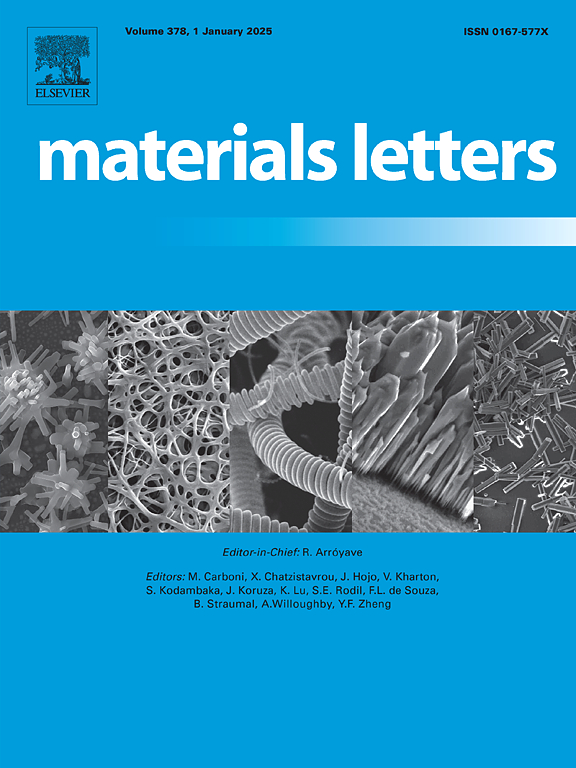Use of seawater as an accelerator in 3D printed concrete (3DPC)
IF 2.7
4区 材料科学
Q3 MATERIALS SCIENCE, MULTIDISCIPLINARY
引用次数: 0
Abstract
Seawater (SW) is one of the viable alternatives to replace freshwater (FW) for producing concrete in regions facing extremely severe water stress. Seawater has high potential to be used as a set-on-demand accelerator among the other expensive materials being widely researched in additive manufacturing. The current study evaluated the progress of heat of hydration in 3DPC-FW and 3DPC-SW mixes using isothermal calorimetry. Furthermore, fresh and early-age properties of these mixes were studied using a flow table, manual shear vane, uniaxial unconfined compressive strength tests, and dynamic elastic modulus development. Strength development and shrinkage progress up to 28 days were evaluated. A detailed investigation reveals that an increase in compressive strength from the very first hours of hydration, a reduction in workability which could be compensated by modifying SP, and higher shrinkage were observed in SW-mixed 3DPC compared to the FW-mixed counterpart. Furthermore, the potential improvement in the speed of printing is highlighted in this study with 3DPC-SW mix demonstrating acceleration in early strength.
在3D打印混凝土(3DPC)中使用海水作为加速剂
海水(SW)是在极度缺水地区替代淡水(FW)生产混凝土的可行替代品之一。在增材制造中广泛研究的其他昂贵材料中,海水具有很大的潜力,可以作为一种按需设置的加速器。本研究采用等温量热法对3DPC-FW和3DPC-SW混合物的水化热进行了评价。此外,通过流动表、手动剪切叶片、单轴无侧限抗压强度测试和动态弹性模量开发,研究了这些混合料的新鲜和早期特性。强度发展和收缩进展长达28天进行评估。一项详细的研究表明,从水化的最初几个小时开始,sw混合的3DPC的抗压强度就增加了,可通过修改SP来补偿可加工性的降低,并且与fw混合的3DPC相比,sw混合的3DPC的收缩率更高。此外,在这项研究中,3DPC-SW混合材料在早期强度方面表现出加速,从而突出了打印速度的潜在改进。
本文章由计算机程序翻译,如有差异,请以英文原文为准。
求助全文
约1分钟内获得全文
求助全文
来源期刊

Materials Letters
工程技术-材料科学:综合
CiteScore
5.60
自引率
3.30%
发文量
1948
审稿时长
50 days
期刊介绍:
Materials Letters has an open access mirror journal Materials Letters: X, sharing the same aims and scope, editorial team, submission system and rigorous peer review.
Materials Letters is dedicated to publishing novel, cutting edge reports of broad interest to the materials community. The journal provides a forum for materials scientists and engineers, physicists, and chemists to rapidly communicate on the most important topics in the field of materials.
Contributions include, but are not limited to, a variety of topics such as:
• Materials - Metals and alloys, amorphous solids, ceramics, composites, polymers, semiconductors
• Applications - Structural, opto-electronic, magnetic, medical, MEMS, sensors, smart
• Characterization - Analytical, microscopy, scanning probes, nanoscopic, optical, electrical, magnetic, acoustic, spectroscopic, diffraction
• Novel Materials - Micro and nanostructures (nanowires, nanotubes, nanoparticles), nanocomposites, thin films, superlattices, quantum dots.
• Processing - Crystal growth, thin film processing, sol-gel processing, mechanical processing, assembly, nanocrystalline processing.
• Properties - Mechanical, magnetic, optical, electrical, ferroelectric, thermal, interfacial, transport, thermodynamic
• Synthesis - Quenching, solid state, solidification, solution synthesis, vapor deposition, high pressure, explosive
 求助内容:
求助内容: 应助结果提醒方式:
应助结果提醒方式:


